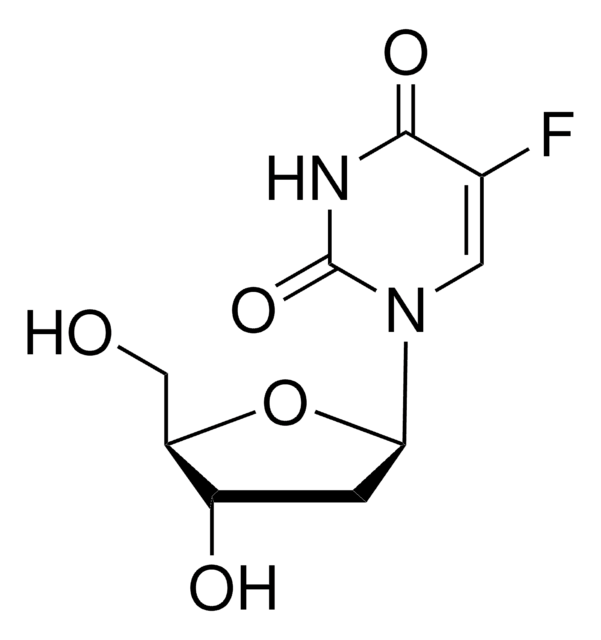F3542
Fibronectin Fragment III1-C human
recombinant, expressed in E. coli, lyophilized powder
Sinónimos:
FF III1-C
About This Item
Productos recomendados
origen biológico
human
Nivel de calidad
recombinante
expressed in E. coli
formulario
lyophilized powder
calidad
essentially salt free
mol peso
8-15 kDa
envase
pkg of 0.5 mg
técnicas
cell culture | mammalian: suitable
cobertura de la superficie
0.45 μg/cm2
solubilidad
Tris-buffered saline: soluble 1.00-1.10 mg/mL, clear, colorless
Nº de acceso UniProt
Condiciones de envío
ambient
temp. de almacenamiento
−20°C
Información sobre el gen
human ... FN1(2335)
Descripción general
Recently a new region, type III1 repeat cloned from human placenta cDNA, was reported to participate in matrix formation. In an experiment employing antibodies for the analysisof fibronectin domains required for matrix assembly, the epitope that inhibited binding and insolubilization of labeled plasma fibronectin by fibroblasts, was identified on the type III1 and type I modules of fibronectin. This suggested a role for type III1 and type I in the mediation of fibronectin assembly. This finding was further supported by the ability of the 14 kDa fragment from the first two type III repeats of fibronectin to inhibit fibronectin matrix assembly.4 Recently recombinant fragment III1-C, modeled after the C-terminal two-thirds of the III1 repeat, was found to bind to fibronectin and induce spontaneous disulfide crosslinking of the fibronectin molecules into multimers, which resemble matrix fibrils
Aplicación
Acciones bioquímicas o fisiológicas
Envase
Código de clase de almacenamiento
11 - Combustible Solids
Clase de riesgo para el agua (WGK)
WGK 3
Punto de inflamabilidad (°F)
Not applicable
Punto de inflamabilidad (°C)
Not applicable
Equipo de protección personal
Eyeshields, Gloves, type N95 (US)
Certificados de análisis (COA)
Busque Certificados de análisis (COA) introduciendo el número de lote del producto. Los números de lote se encuentran en la etiqueta del producto después de las palabras «Lot» o «Batch»
¿Ya tiene este producto?
Encuentre la documentación para los productos que ha comprado recientemente en la Biblioteca de documentos.
Los clientes también vieron
Artículos
Fibronectin (FN) is a multifunctional, extracellular plasma glycoprotein produced by hepatocytes that circulates at near micromolar concentration and assembles into extracellular matrix fibrils at cell surfaces along with locally produced cellular FN.
Cancer stem cell media, spheroid plates and cancer stem cell markers to culture and characterize CSC populations.
Extracellular matrix proteins such as laminin, collagen, and fibronectin can be used as cell attachment substrates in cell culture.
Protocolos
Dilute fibronectin to the desired concentration. Optimum conditions for attachment are dependent on cell type and application. The typical coating concentration is 1 – 5 ug/cm2.Fibronectin coating protocol, products, and FAQs at sigmaaldrich.com
Dilute fibronectin to the desired concentration. Optimum conditions for attachment are dependent on cell type and application. The typical coating concentration is 1 – 5 ug/cm2.Fibronectin coating protocol, products, and FAQs.
Nuestro equipo de científicos tiene experiencia en todas las áreas de investigación: Ciencias de la vida, Ciencia de los materiales, Síntesis química, Cromatografía, Analítica y muchas otras.
Póngase en contacto con el Servicio técnico




